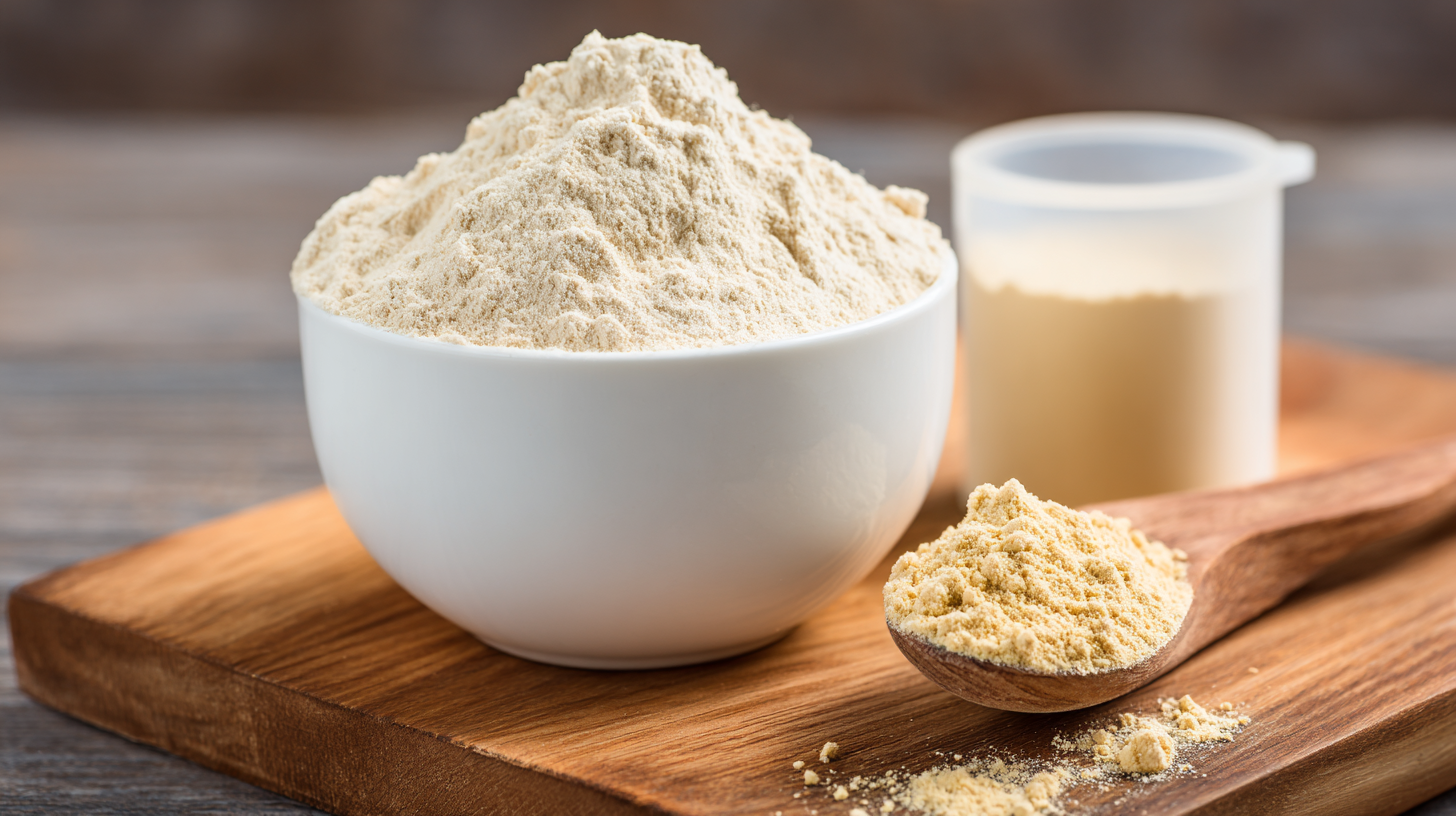As the global demand for health and fitness products continues to rise, the market for Weight Protein Powder is poised for significant growth in the coming years. According to a recent report by Grand View Research, the global protein supplement market was valued at approximately USD 18.5 billion in 2020 and is projected to expand at a compound annual growth rate (CAGR) of 8.5% from 2021 to 2028. The 2025 China Import and Export Fair, also known as the Canton Fair, will serve as a pivotal platform for industry stakeholders to explore emerging trends and showcase innovations in this expanding sector.

With China's increasing focus on health and wellness, the demand for Weight Protein Powder is expected to soar, driven by a growing population of health-conscious consumers and an enhanced distribution network. This event will provide valuable insights into market dynamics, consumer preferences, and opportunities for growth within this vital segment of the nutritional products landscape.
As the 2025 China Import and Export Fair approaches, the protein powder market is witnessing significant shifts that reflect broader dietary trends and consumer preferences. Increasing health consciousness among consumers has driven the demand for protein supplements, particularly those derived from plant-based sources. This trend is indicative of a growing awareness regarding sustainable nutrition, as many consumers are actively seeking alternatives to traditional animal-based proteins.
In preparation for the fair, market analytics suggest that innovations in flavoring and formulation are key drivers of growth in the protein powder sector. Brands are diversifying their product offerings to include not only traditional whey protein but also an expanding array of vegan options, such as pea and brown rice protein. Additionally, the emphasis on clean-label products—those free from artificial additives—aligns with the heightened consumer focus on transparency and health. As stakeholders prepare for the 2025 Fair, understanding these dynamics will be crucial for positioning products and engaging effectively with a discerning market.

The growing health consciousness among Chinese consumers has led to a notable shift in their dietary preferences, particularly in the realm of protein supplementation. Weight protein powder has surged in popularity, driven by a diverse demographic that includes fitness enthusiasts, athletes, and health-conscious individuals. This trend reflects a broader cultural shift towards wellness and preventive health management. In 2025, at the China Import and Export Fair, consumer preferences for weight protein powder will provide critical insights into emerging market trends, showcasing a clear inclination towards high-quality, plant-based protein sources.

Furthermore, the analysis of consumer preferences reveals that taste, ingredient transparency, and nutritional benefits play pivotal roles in their purchasing decisions. Younger consumers, particularly millennials and Generation Z, are increasingly seeking products that not only fulfill their dietary requirements but also align with their lifestyle choices, such as veganism or clean eating. As brands adapt to these preferences, they must focus on innovation in flavor profiles and formulations, responding to the demand for clean labels and ethical sourcing. The 2025 fair will be a key platform for manufacturers to engage with consumers and refine their offerings in this thriving market.
The protein powder market in China is witnessing significant growth, driven by a rising demand for health and fitness products. With consumer preferences increasingly leaning towards plant-based and protein-rich diets, key competitors are strategically positioning themselves to capture market share. Leading companies are likely to leverage innovations in product formulation and marketing strategies to meet the evolving needs of health-conscious consumers.
Tips for entering the protein powder market include identifying emerging trends such as sustainability and functional ingredients. Brands should explore collaborations with influencers in the health and wellness sector to enhance visibility and credibility. Additionally, offering diverse product ranges that cater to different dietary needs, including vegan and allergen-free options, can attract a broader customer base.
As competition intensifies, companies must also focus on building strong brand loyalty through transparency in sourcing and manufacturing. Engaging customers with educational campaigns that emphasize the benefits of protein supplementation can further solidify a company's reputation and foster community engagement around their products.
The regulatory landscape surrounding protein powder imports and exports in China is set to undergo significant transformations by 2025, driven by evolving food safety standards and health regulations. In recent years, the Chinese government has intensified its focus on ensuring the safety and quality of food products, including protein powders. This shift in policy is expected to impact how foreign companies navigate the Chinese market, as compliance with stricter regulations becomes paramount. Companies will need to adapt their manufacturing processes and labeling practices to meet these new requirements, potentially reshaping the competitive landscape.
Moreover, the impact of these regulatory changes on protein powder imports will extend beyond compliance challenges. As China seeks to promote domestic production and minimize reliance on foreign products, import tariffs and quotas may be adjusted, affecting pricing and availability. This could incentivize foreign producers to innovate and enhance the nutritional profiles of their products to remain competitive. Understanding and anticipating these regulatory impacts will be crucial for stakeholders in the protein powder market, guiding their strategic decisions and positioning as they prepare for participation in events such as the 2025 China Import and Export Fair.
| Year | Import Volume (Metric Tons) | Export Volume (Metric Tons) | Market Value (Million USD) | Regulatory Changes Impact |
|---|---|---|---|---|
| 2023 | 50,000 | 30,000 | 150 | No Significant Changes |
| 2024 | 55,000 | 35,000 | 160 | New Labeling Requirements |
| 2025 | 60,000 | 40,000 | 175 | Stricter Imports Standards |
As the global market continues to evolve towards health-conscious products, weight protein powder has gained immense popularity among fitness enthusiasts. Innovations in this sector are predominantly driven by the surge in demand for plant-based proteins, particularly pea protein, which has emerged as a consumer favorite. Recent trends indicate that the plant-based protein market is projected to grow significantly, with estimates suggesting a market size increase to $10.2 billion by 2025, reflecting a CAGR of 7.2% from 2020 to 2025. This trajectory outlines the industry's potential for manufacturers looking to innovate.
Moreover, with the rising awareness of dietary supplementation, more individuals beyond traditional athletes are embracing high-protein diets. As a result, product innovation is anticipated to shift towards offering unique flavor profiles and added functional benefits, such as enhanced digestive health and immunity support. Companies focusing on R&D to create advanced formulations that combine protein with essential nutrients will likely capture a larger market share, especially during events like the 2025 China Import and Export Fair, where new products will be showcased. This transformation within the weight protein powder market reflects broader consumer behavior trends that prioritize health and wellness, paving the way for a dynamic future in the nutritional supplement industry.
This chart illustrates the anticipated growth of the weight protein powder market from 2019 to 2025. As the demand for protein supplements increases, the market is projected to grow significantly, especially with innovations in product formulations and health trends focused on fitness.






